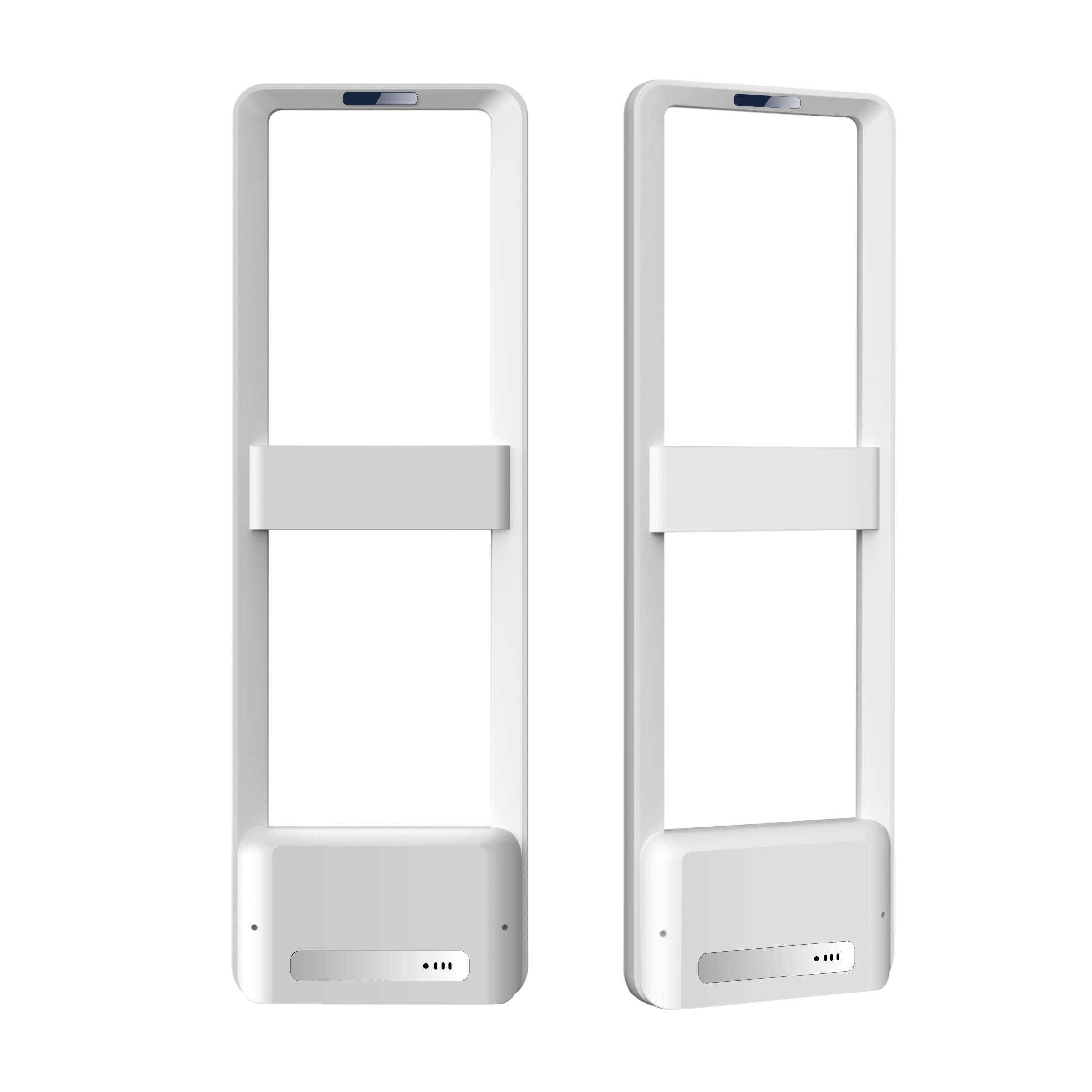EAS electronic anti-theft system and RFID technology are two technologies that are widely used in the retail industry.
EAS technology is primarily used in retail environments to prevent theft of goods. It works by attaching specific labels to the goods and installing detection systems at the entrances and exits of malls or libraries. When unauthorized goods pass through the exit, the system detects the label and triggers an alarm. An EAS system typically consists of three parts: an anti-theft alarm attached to the goods, an anti-theft tag, and equipment to remove the tag, such as a demagnetizer and a de-clasp.
RFID technology is a non-contact automatic identification technology that can automatically identify target objects and obtain related data. The working principle of RFID technology is that when the electronic tag enters the radio frequency field of the reader, the tag antenna receives the radio frequency signal, activates the chip inside the tag, and sends the product information stored in it to the reader. The advantages of RFID technology include long-distance identification, multi-tag identification, and large data storage capacity.
The Combination of RFID and EAS Technology: As technology continues to advance, the use of RFID technology is becoming increasingly popular. In the RFID era, what role should EAS technology play? A RFID-based EAS technology solution was proposed by combining RFID technology. This technology, based on traditional EAS, stores anti-theft information in RFID electronic tags and achieves the goal of preventing theft by identifying the electronic tags.
Application of EAS Function in UHF RFID Electronic Tag: UHF RFID electronic tags can be used in EAS systems, where the identification of the electronic tag can achieve the goal of preventing theft of goods. Before goods with electronic tags leave the warehouse, a special instruction needs to be sent by the reader to clear the EAS bit in the eleUHF RFID electronic tags can be used in EAS systems, where the identification of the electronic tag can achieve the goal of preventing theft of goods. Before goods with electronic tags leave the warehouse, a special instruction needs to be sent by the reader to clear the EAS bit in the electronic tag. Only goods that have completed this step can pass through the anti-theft door at the exit safely.
The Application of RFID Technology in Retail Industry: The application of RFID technology in the retail industry mainly focuses on supply chain management, inventory management, in-store product management, customer relationship management, and security management. In particular, in the area of product anti-theft, RFID technology can achieve the remote identification and automated monitoring of goods, with advantages such as fast identification speed, high recognition rate, and automatic acquisition of product information compared to traditional EAS anti-theft systems.
The trends of RFID technology application in EAS system: The integration of RFID technology, highly intelligent, cloud computing and data analysis, application of machine learning and artificial intelligence, use of wireless communication technology, application of biometric technology, environmental friendliness, miniaturization and integration, etc. will drive the development of EAS system.

 +86 13688916156(WeChat)
+86 13688916156(WeChat) Email: sales@lifmei.com
Email: sales@lifmei.com Region/Language
Region/Language







